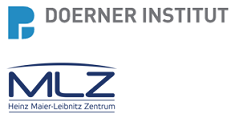Speaker
Description
X-ray Raman spectroscopy (XRS) allows chemical speciation deep into materials, including for low-Z elements such as carbon and oxygen, which is inaccessible using X-ray absorption spectroscopy (XAS) [1-3]. XRS has been shown to provide sufficient contrast for non-invasive 3D chemical imaging, without significant prior preparation, making it a valuable tool for cultural heritage studies [4,5]. However, the main limitation of the technique is the limited effective cross-section of inelastic X-ray scattering, which is several orders of magnitude smaller than photo-excitation in the hard X-ray regime. This results in long collection times using a high-brightness monochromatic synchrotron source, which can lead to photochemical and photophysical modifications [6]. The limitation of degradation mechanisms is fundamental for heritage system.
In the context of a long-term project carried out at the ID20 beamline of the ESRF synchrotron facility since 2021, and performing additional experiments at GALAXIES at SOLEIL, we have optimised several strategies for the collection and processing of large XRS data sets on radiation-sensitive cultural heritage samples, in particular paint materials. In this work, we limit exposure time by reducing both the number of energy points, further developing an approach pioneered in XAS [7], and the acquisition time per energy point per pixel.
We aim at finding a compromise by reducing experimental time with optimal parameter selection, while still being able to process resulting noisy datasets. By taking advantage of the large number of pixels, in combination with new software development of the ESRF XRStools software [8], we will show that statistical analysis can provide a robust understanding of the spatial-spectral information. In addition, cryogenic setups were tested to slow irradiation damage, with interesting applications for the fundamental study of restoration protocols and the chemistry of replicated samples.
We therefore show the interest of using a hybrid digital and experimental approach to develop the processing of datasets with a very low photon count.
This project is supported by the European Commission in the framework of the GoGreen project (GA no. 101060768).
[1] Huotari, S., Pylkkänen, T., Verbeni, R., Monaco, G., and Hämäl̈äinen, K. Nature Materials, 10.7, 2011.
[2] Sahle, Ch. J., de Clermont Gallerande, E., Niskanen, J., Longo, A., Elbers, M., A. Schroer, M., Sternemann , C. & Jahn, S., Phys. Chem. Chem. Phys., 24, 2022.
[3] Georgiou, R., J. Sahle, C., Sokaras, D., Bernard, S., Bergmann, U., Rueff, J.-P., & Bertrand, L., Chemical Reviews, 122 (15), 2022.
[4] Gueriau, P., Rueff, J.-P., Bernard, S., Kaddissy, J. A., Goler, S., Sahle, C. J., Sokaras, D., Wogelius, R. A., Manning, P. L., Bergmann, U., & Bertrand, L., Analytical Chemistry 89(20), 2017.
[5] Georgiou, R., Gueriau, P., Sahle, C. J., Bernard, S., Mirone, A., Garrouste, R., Bergmann, U., Rueff, J.-P., & Bertrand, L., Science Advances 5(8), 2019.
[6] Bertrand, L., Schöder, S., Anglos, D., Breese, M. B. H. , Janssens, K., Moini, M., and Simon, A., Trac-Trends Anal. Chem., 66:128–145, 3 2015; Bertrand, L., Schöder, S., Joosten, I., M. Webb, S., Thoury, M., Calligaro, T., Anheim, E., Simon, A., TrAC, 2023.
[7] Cohen, S. X.,Webb, S. M., Gueriau, P., Curis, E., and Bertrand, L., J. Synchrotron Rad., 27(4), 2020.
[8] Sahle, Ch. J., Mirone, A., Niskanen, J., Inkinen, J., Krisch, M. & Huotari, S. J. Synchrotron Rad. 22, 2015.

